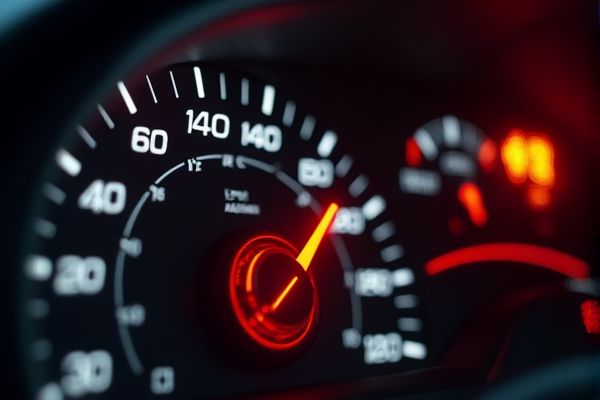
The Suzuki SA310's illuminated check engine light is a critical diagnostic indicator that signals potential engine performance issues, emissions control faults, or sensor malfunctions, necessitating immediate attention through a comprehensive OBD-II diagnostic scan. Prompt analysis and repair of the detected trouble codes can prevent further damage, ensuring that the Suzuki SA310 maintains optimal reliability and efficiency.
Suzuki SA 310 check engine light on meaning
IAT Sensor Circuit Malfunction
Fault in the Intake Air Temperature sensor circuit.
Air Flow Sensor Circuit Malfunction
Issue with the Mass Air Flow sensor circuit.
Pressure Sensor Circuit Malfunction
Problem with the pressure sensor circuit.
Ignition Signal Circuit Malfunction
Fault in the ignition signal circuit.
Crank Angle Sensor Circuit Malfunction
Issue with the Crank Angle Sensor circuit.
EGR System Malfunction
Exhaust Gas Recirculation system failure.
Fuel Injector Circuit Malfunction
Problem with the fuel injector circuit.
MAP Circuit Performance Problem
Issue with the Manifold Absolute Pressure sensor circuit.
MAF Circuit Performance Problem
Fault in the Mass Air Flow sensor circuit.
HO2S Circuit Malfunction
Oxygen sensor circuit malfunction.
Fuel System Too Lean/Too Rich
Imbalance in the fuel-air mixture.
Random Misfire Detected
Random misfires in the engine cylinders.
Misfire Cylinders 1-4
Misfires detected in specific engine cylinders.
CKP Sensor Circuit Malfunction
Crankshaft Position sensor circuit issue.
CMP Sensor Circuit Malfunction
Camshaft Position sensor circuit fault.
Catalyst System Efficiency Below Threshold
Catalytic converter efficiency issue.
EVAP System Malfunction
Evaporative Emission Control system failure.
VSS Malfunction
Vehicle Speed Sensor malfunction.
IAC System Malfunction
Idle Air Control system issue.
Radiator Cooling Fan Control System Malfunction
Cooling fan control system failure.
Engine Starter Signal Circuit Malfunction
Fault in the engine starter signal circuit.
ECM Back-Up Power Supply Malfunction
Electronic Control Module backup power issue.
Ignition Timing Adjustment Switch Circuit Malfunction
Problem with the ignition timing adjustment switch circuit.
Serial Communication Problem Between ECM & TCM
Communication issue between Engine Control Module and Transmission Control Module.
For car users
If your Suzuki SA 310's check engine light comes on, first verify basic maintenance items by checking the oil level, ensuring the gas cap is secure, and inspecting for any visible leaks or loose connections that could trigger a sensor alert. Next, use an OBD-II scanner to retrieve diagnostic codes and promptly consult a qualified mechanic with that data to identify and address any underlying issues before they develop into more serious problems.
Ignoring the check engine light
Ignoring the check engine light on a Suzuki SA 310 may mean undiagnosed issues such as engine misfires, oxygen sensor failures, or catalytic converter problems--conditions that often lead to reduced fuel efficiency, performance drops, and repair bills that can escalate by up to 30% if left unaddressed. Data from diagnostic tests emphasize that delaying necessary maintenance increases the risk of severe engine damage, compromises vehicle safety, and ultimately decreases the car's resale value.
How to reset?
To reset the Suzuki SA310's check engine light, first ensure that any underlying faults are addressed, then either disconnect the battery's negative terminal for around 15 minutes before reconnecting or use an OBD-II scanner to clear the error codes. Prioritize accurate fault diagnosis using the engine's specific error codes to prevent recurrence and maintain optimal engine performance.
When the check engine light appears on a Suzuki SA 310, running a complete diagnostic typically costs between $80 and $150, with subsequent repairs ranging from approximately $150 to $1,000, largely depending on issues such as sensor malfunctions or catalytic converter faults. Prioritizing data, these estimates include labor and parts costs, so early diagnosis is crucial to determine whether a simple sensor replacement or more extensive emission system repair is necessary.
Future prevention
Ensure regular maintenance by scheduling timely oil changes, spark plug and air filter replacements, and periodic sensor checks according to Suzuki SA 310's service manual to maintain optimal engine performance and prevent check engine errors. Using high-quality fuel, monitoring diagnostic codes with an OBD tool, and addressing minor issues immediately will further reduce the risk of the check engine light coming on.
